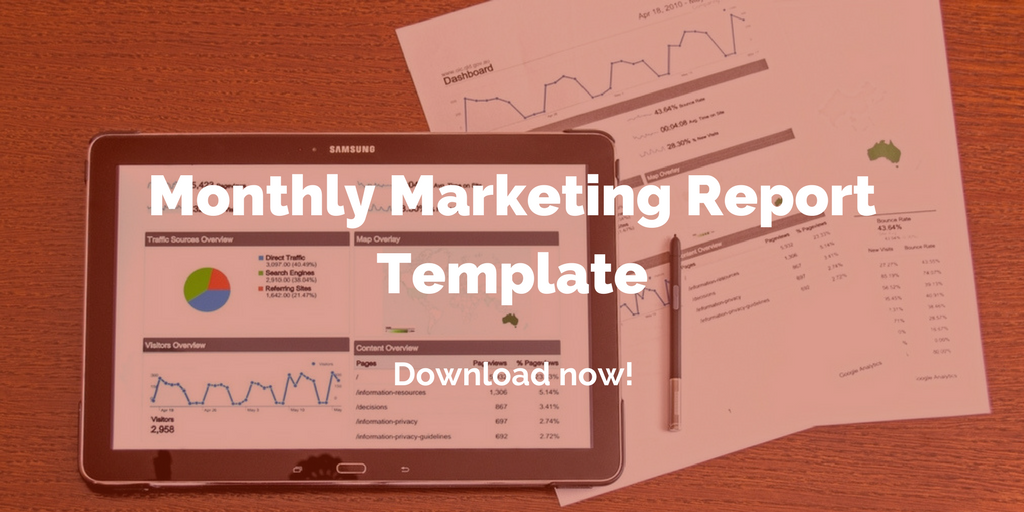
by Fronetics | Sep 11, 2017 | Blog, Content Marketing, Marketing, Social Media, Strategy
Social prospecting can help logistics and supply chain companies identify and engage with leads on social media in a genuine — and highly effective — way.
Social media should be an integral part of your marketing strategy. You know it helps build brand awareness, gather market intelligence, discover customer problems, and influence purchasing decisions. But your lead generation efforts should also include the use of social platforms. It’s a practice called social prospecting, which can be highly effective in identifying new prospects.
What is social prospecting?
With more than 2 billion monthly active users on Facebook and over 328 million monthly active users on Twitter, smart marketers know there’s more potential than ever to use social platforms to get their name out there, spread their content, and draw more people to their site. Hey, it’s your job to make people aware of what your company can offer, right? Right.
That’s where social prospecting comes in. It involves scouring the social web, identifying potential prospects for your business, engaging them with content, and getting those potential prospects to your sales team. “Social prospecting is the art of listening to people, not mentions or keywords,” writes Maggie Hibma for HubSpot.
Social media isn’t just for recreational purposes anymore. More than half (53%) of B2B buyers report using social media to research purchases, in fact. Social prospecting allows you to be proactive in finding all of the considerable number of social-media-using prospects who are looking for you, too.
But as with any initiative, social prospecting requires commitment. In order to find new leads, social prospecting needs to become a part of your daily routine. The end results will be quality leads that are already committed to your brand because of the connection you have created through social channels.
Creating positive impressions
The secret behind successful social prospecting is creating and distributing content that shows that you and your company genuinely care about your clients and prospects. It’s about ditching the ‘sales’ game and working to establish your brand as an industry leader that has a connection to your community and a lot of valuable insight to share.
Make your content about your target consumers: What do they need to know, struggle with, or want to learn more about? By distributing this content across social channels to foster sharing, conversation and engagement, you’ll gain influence with your audience (and their networks) and make a positive impression.
Prospecting vs. spamming
The definition of spam is “indiscriminately.” It means “in a random manner” or “in a way that does not show care or judgment.” This is the opposite of how social prospecting should work. The connection that you create with your prospects should be anything but random.
Think about the number of possible prospects on social media right now. Facebook just topped 2 billion active users monthly, and Instagram is pulling in over 250 million daily active users. These massive numbers scream opportunity — but only if you are putting your time and effort into the right people, on the right channels, at the right time.
Sounds complicated? It doesn’t have to be. If you already have a social media presence, that’s step one.
Fronetics’ recently updated Social Prospecting Workbook guides you through using social listening to generate new leads for your business. We’ve identified the quickest way to find potential customers on Twitter, Facebook, LinkedIn, Pinterest, and Google+. Every worksheet includes:
- Short preparatory work to make the actual prospecting easy
- Visual instructions on how and where to find prospects
- Pro tips that will help you get the best results
- Prescriptions (Marketing Rx) for success
- Take-home exercises for follow-up prospecting
Download it now, and let us know what you think!

Related posts:

by Fronetics | Sep 7, 2017 | Blog, Content Marketing, Marketing, Social Media
When you are posting on social media could be as important as what you’re posting, and this CoSchedule study attempts to determine the best time to post.
Timing is everything. And that statement especially holds true when it comes to posting content to social media.
There’s no point in putting in the time and effort to create informative blog posts, inspirational tweets, or captivating Facebook posts if you’re not getting the most exposure you can out of your social media outlets.
That being said, there is ample data out there on the best times to post on Facebook, Twitter, LinkedIn, and Instagram. Earlier this year, CoSchedule looked at a combination of its own original data and more than a dozen studies on this very topic, from sources like Buffer and Quintly, and compiled the results to take the guess work out of when to post.
Here’s a breakdown of their results.
Best times to post on social media by network
Facebook
Most people are using Facebook around the clock, on their desktop and mobile devices. Unlike other sites that attract more attention during the work week, Facebook users are checking in at work and at home.
- The most optimal time to post is 1-4 p.m. Thursday through Sunday, specifically on Saturdays and Sundays between 12-1 p.m.
- Posts during the week had the highest clickthrough rate on Wednesdays at 3 p.m.
- Avoid weekends before 8 a.m. and after 8 p.m., when user numbers are significantly lower
Twitter
Much like Facebook, Twitter users are active on their mobile devices as well as their desktop computers. But they tend to treat Twitter like a revolving newsfeed, so downtime breaks — like during commuting hours and lunch — tend to see higher usage.
- Between 12-3 p.m. and 5-6 p.m. is the optimal time to tweet for the most exposure, which correlates with lunch and the evening commute.
- Weekday tweets have a higher chance of being retweeted with higher clickthrough numbers
- B2B tweets saw a 16% better performance during work hours, while B2C tweets saw a 17% better performance on weekends.
LinkedIn
Also known as the social media site for professionals, LinkedIn saw 25% of its users during weekdays and specifically, during work hours. Not as popular as some of its competitors, more than half of LinkedIn users visit less than once a week, so your posts need to deliver a clear message in short, informative posts.
- Not surprisingly, the posts with the highest views and clickthrough rates were Tuesdays through Thursdays from 7-8 a.m., 12 p.m. and 5-6 p.m., in direct correlation with the start and end of the work day.
- Some companies have seen a higher performance on Tuesdays between 10-11 a.m.
Instagram
More than half of Instagram users log on daily, but tend to use the mobile app in their free time. Posts for this site are image-driven and are often more creative and less data-heavy than other sites.
- In general, the best times to post are on Mondays and Thursdays, in the evenings or early mornings.
- Some companies have reported success on Mondays between 8-9 a.m., correlating with the morning commute.
Many people still play a guessing game when it comes to deciding the best time to post their content for the most impact. And though there is no magic formula for the most retweets or reposts, there is data to help guide you. Posting the right content, at the right time, can make the difference between getting valuable comments, shares, and clicks on your links, which translate to valuable new leads.
Related posts:


by Fronetics | Sep 6, 2017 | Blog, Content Marketing, Marketing, Strategy
Find the right marketing outsource partner for your business by asking specifically about strategy development, industry experience, and more.
More and more supply chain companies are choosing to outsource their marketing, giving them the flexibility to focus on their core business, while leaving marketing to trusted experts. But before you jump into a partnership, it’s important to remember that not all marketing firms are created equal.
To help you decide if a marketing firm is right for your business, here are 10 questions you should be asking potential marketing partners — and what to listen for in the answers.
10 questions to ask marketing outsource partners
1) How do you develop a strategy?
The word you should be listening for is: individualized. Your marketing partner should build a strategy specifically tailored to your business, based on data, analytics, and your company’s goals.
2) What would my account team look like?
When you outsource your marketing, look for a team of experts that work together to improve the various aspects of your marketing strategy. For example, the person running your social media presence should have specific social media expertise.
3) Do you know my industry?
It’s vitally important that your marketing partner has a deep understanding of your company, your industry, and your customers. Don’t be satisfied with a surface knowledge, or with a marketing firm that doesn’t have personnel that specializes in your industry.
4) How do you measure success?
Your marketing partner needs to have a plan in place to provide you regular and frequent reports showing designated metrics that match the goals of your strategy. For instance, if one of your business’ goals is to increase brand awareness, web traffic and social impressions are two metrics you should be getting reports on every month.
5) What other services do you offer (even if I don’t need them yet)?
Many of Fronetics’ clients start off wanting only one of our services (like social media management), but quickly realize a multi-channel digital strategy would better help them reach their goals. You want to know that, if you need to expand your scope of work to include more services (such as social advertising or video creation), your partner can handle those.
6) Do you offer training?
We’ve all heard the old adage about teaching a man to fish. While it can be hugely beneficial for your business to trust your marketing strategy to the experts, part of a well-rounded strategy includes educating key members of your staff, such as sales personnel, on how the rest of your business’ operations can dovetail with your marketing strategy. A partner who offers workshops or other types of training is a plus.
7) What is your philosophy for content creation?
Listen for a partner who listens to you. If you’re going to outsource content creation, your partner needs to be ready to learn every aspect of your business, its goals, and its philosophies — and to create content that reflects those things.
8) Do you have videography capability?
Even if you don’t think your business needs video content right now, chances are, this new wave content platform will be something you need at some point. You want to find a partner who can easily help you make strides in this area — whether the partner handles video production in house or will manage a third-party vendor for you.
9) What are your goals for my business?
You want a partner who shares your company’s vision. But it’s a bonus if you can find a partner who offers you goals you hadn’t even considered but that make sense for your business.
10) What’s the first thing you’re going to do when I hand over my business’ marketing strategy to your firm?
While it might be exciting to hear an answer like “revamp your entire web presence,” the savvier business listens for something a little different. A partner who assures that they will first seek to analyze, research, and understand every aspect of your unique business will ultimately be more likely to guide you to your goals. Once they know the ins and outs, then it’s time for the revamping!
Related posts:


by Fronetics | Sep 5, 2017 | Blog, Content Marketing, Marketing, Social Media
Use Quora to answer potential customers’ questions, and they’ll perceive you as a valuable source of knowledge and an industry thought leader.
Despite gaining popularity over the last several years, Quora’s potential as a marketing tool for supply chain and logistics companies remains largely untapped.
In case you haven’t jumped on the bandwagon yet, Quora touts itself as “a place to share knowledge and better understand the world.” It’s a simple premise, but one that’s been highly effective since its founding in 2009: “It’s a platform to ask questions and connect with people who contribute unique insights and quality answers.” Essentially, the site is a community-generated question-and-answer forum.
How does Quora work?
Anyone can ask or answer questions on Quora. A key feature of the site is voting feature: community members vote on which answers are most helpful, boosting those responders’ visibility and credibility. A few other things the site allows you to do:
- Target your question to specific users;
- Publish content (much like LinkedIn’s publishing platform);
- Search for questions or topics relevant to your business, and follow these keywords to get notifications of new questions.
You might already be starting to see the exciting potential in this social media platform. But let’s talk about three specific ways you can use Quora to build your brand, generate leads, and engage with your potential buyers.
3 ways supply chain and logistics marketers can use Quora
1) Research
Using Quora is about gaining and spreading knowledge. Your peers and competitors might be talking about their new projects with an audience that’s actively offering feedback on what it wants or doesn’t want. Before even jumping in with your own content, just staying attuned to the conversation can be a valuable resource as your business builds its marketing strategy.
2) Building and maintaining connections
Relationship-building is a key benefit of using Quora. While sites like LinkedIn and Twitter are valuable for quicker engagement, Quora offers a forum for substantive conversations, a crucial building block for lasting buyer engagement.
The site also offers a great opportunity to reach beyond your normal sphere. Emma MacAnnally of Torchlight suggests: “Don’t be afraid to ask questions and engage in conversations with others you respect and admire.” She points out that doing this will broaden your audience, offer new insights, and give you recognition with thought leaders in your field. “Networking can happen anywhere,” she says.
3) Reputation building
Quora offers you the ability to run a quick search of your business’ name, and tune in to what’s being said about your brand. Also, by answering others’ questions with substantive, reliable content, you can become a resource for potential buyers, as well as others in the industry.
Your business is more than its product. You can offer your audience valuable knowledge. Quora gives you a direct way to answer the questions that your potential buyers are asking, building your reputation as a resource for knowledge and as an industry thought leader.
Related posts:


by Fronetics | Aug 29, 2017 | Blog, Content Marketing, Current Events, Marketing, Social Media
When it comes to social media news in August 2017, the words of Kanye West, “stronger, better, faster, stronger,” have never been truer.
August has seen a continued push to get more information to more people in real time. Pinterest is introducing mobile ads. YouTube is adding sharing and chat features to the app. Google is developing new software to rival Snapchat. And, of course, the social media giant Facebook is always working on new improvements to dominate its competitors.
Facebook Tests Custom Audiences Based on Interactions with Event Pages
Brands will soon have the ability to create custom audience groups based on visitors’ interactions with the brand’s event pages. Facebook has confirmed that brands will be able to choose custom audiences made up of users who responded to any event on their pages or to specific events, and they will also be able to include users who RSVPed as going, interested, or both. Though only in its testing phase, these initial companies have been able to create audience groups based on interactions within the past 180 days.
Google Developing Rival to Snapchat Discover Feature
Back in 2016, Snapchat introduced ‘Discover,’ which allowed users to view news in the form of Snapchat Stories. At the time, this new technology allowed social media to combine news and television in short videos. Now Google wants a piece of the action. Google is working to allow publishers the ability to create media-oriented content. “The new publisher technology, called ‘Stamp,’ represents an escalation in the competition between tech platforms for publisher partnerships and access to media content, which they need to drive user engagement,” writes Erik Sass for Media Post.
Pinterest Rolls Out Mobile Video Ads to All Advertisers
Initially introduced a year ago to a limited amount of Pinterest advertisers, now all advertisers will have the ability to create mobile video ads. Using auto-play, the new type of promoted videos will begin playing as soon as users scroll across a brand’s feed and will also auto-play in Pinterest’s search results. Jenny Chiu, head of partnerships at Pinterest, said in a blog post, “Your Promoted Video sparks into action the moment a Pinner scrolls across it in their feed — no need to hit play. They can just sit back and watch your video unfold. And unlike on other platforms, where ads interrupt people as they’re trying to enjoy posts from friends, on Pinterest, people are actually looking for videos that inspire them to give ideas a try.”
Twitter Tests New Feature that Allows Brands to Automate Their Promotional Tweets
Twitter is in the initial testing of having brands pay ($99) to have their tweets automatically promoted on its app. Brands can tweet as they normally would, and the social network will automatically promote some of those tweets, but brands cannot customize which tweets are promoted. Twitter will create bi-weekly reports that will include information on audience insights, user growth and new user engagement. Companies were able to sign up on Twitter’s homepage to try to land a spot in the beta testing, which is now completely full. Stay tuned to see if Twitter rolls out this new feature to all users.
LinkedIn Rolls Out Quick Access to Samsung Users
LinkedIn and Samsung have teamed up to create the ultimate user experience. Now Samsung Galaxy S8 and S8+ owners can have access to LinkedIn’s content and calendar experience. Using Bixby, Samsung’s digital assistant, users can easily access LinkedIn’s Trending Storylines that include top news stories and scheduling details through My Schedule notifications.
YouTube Adds Chat and Sharing Features to Mobile App
YouTube has been working on ways to make sharing videos easier than ever. With the newest app features, users can share videos directly through the mobile app, as well as chat with other viewers in real time. YouTube announced on its blog, “Not only can you share and receive videos in the app, you can also chat about them right on YouTube, reply with another video, invite others to the conversation, and more. We think it’ll make sharing easier, faster and more fun on your phone. And if you want to continue sharing videos through other apps, you can still do that too.”
Related posts:


by Jennifer Hart Yim | Aug 24, 2017 | Blog, Content Marketing, Manufacturing & Distribution, Marketing, Supply Chain
Here are seven tips for manufacturers to improve your email marketing strategy in the manufacturing and industrial sector.
This post comes to us from Adam Robinson of Cerasis, a top freight logistics company and truckload freight broker.
Email marketing is a powerful tool for growing and developing different types of businesses. However, many industries are still unaware of the power of using an appropriate email marketing strategy. Many manufacturers and industrial companies are still stuck in the one-off batch and blast mode of email marketing. That strategy is not likely to work very well in industrial marketing, where most of the purchases are expensive; complex products with long sales cycles, multiple decision-makers, and stakeholders are involved; and there is a much higher risk if a wrong decision is made.
7 email marketing tips for manufacturers
1. Avoid SPAM at all costs
The last thing that you want is for your emails to end up in someone’s spam folder or have your emails banned from someone’s inbox. Before you even start an email marketing campaign, you should print out the latest copy of the CAN-SPAM act to remind yourself of some email marketing principles, such as any recipient must have given their consent before receiving commercial email, have an option to unsubscribe from receiving further emails, do not mislead the recipient about the content or the origin of the email, and use approved methods to get a recipient’s email address.
2. Personalize your emails
You should avoid sending generic emails. Your recipients are not all the same, and you should make distinctions between them by segmenting your database. This means sending the same type of email diversified in some key aspects depending on the type of recipient. The content and filters of platforms such as Litmus and Reach Mail, which is based on personal data, geography, activity, and devices used, let you automate the entire process to narrow your focus and identify the ideal sub-section of your list.
3. Increase your traffic and clicks
By creating the perfect email marketing campaign, you will have the power to turn emails into clicks and traffic to your website. Sending relevant links to your subscribers will drive them to your website, and this increases the potential for new sales. If you want to give a real boost to your click-thru rates, you should keep in mind that you have to get rid of the clutter. Having an email that has too many graphics and banners will confuse your readers and leave them wondering what they are supposed to click on.
4. Offer quality content
You should always provide useful, quality content in an email and links to further information. Your emails should be more informative than sales-related, especially in the manufacturing industry. Talk about your company’s safety standards, advertise interviews with experts, and discuss pressing matters in your industry. Not presenting your information in a clear and accurate way will put off your recipients. You can take advantage of online tools to help you with your content writing. Use Australian Help and Oxessays as copywriting tools for writing your emails and Bigassignments to help you to edit your content. [Editor’s note: You can also partner with a third-party marketing firm to develop and execute an email marketing strategy for your business.]
5. Optimize your subscriber list
Do not rush out and buy an email list to get started with email marketing. You should grow your in-house subscriber list and get to know your customers and what they need from you.
6. Link your email platform with other channels
Email platforms, external databases, e-commerce, social media, and business intelligence systems can all be linked to optimize your business and reach more potential clients. Platforms such as Mail Chimp and Mad Mimi allow you to connect and integrate every system, synchronize the information on each, and have them communicate with each other.
7. Automation and tracking
You should try to make your email marketing strategy as efficient as possible with email marketing automation. Platforms such as the mentioned Litmus and Reach Mail will let you automate the entire process. Analyzing and tracking your campaigns’ performance is also essential. Using the analysis tools and reports available from the platforms we suggested will allow you to check and optimize your clicks, traffic, and sales.
Wrapping up the 7 email tips for manufacturers
There are many things to consider when creating an email marketing campaign. The main goal is to effectively connect with potential customers to persuade them to purchase your product by reminding them that you exist and that you are helping. Use these email tips for manufacturers to continually improve your sales and grow your industrial business.
Related posts:












